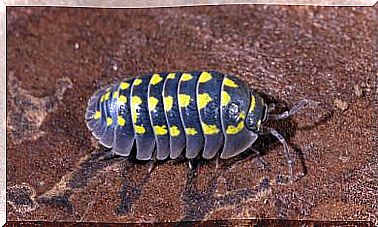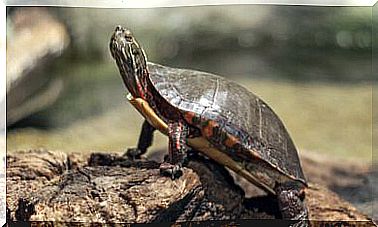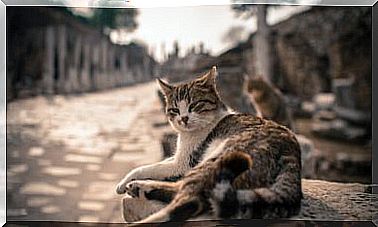Thorny Devil: Information And Characteristics
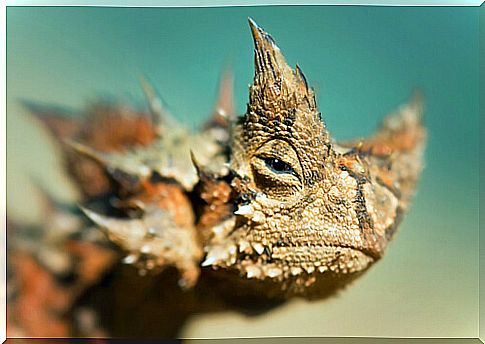
The thorny devil is a very curious looking lizard. So far it is the only species of the genus Moloch , of the Agamidae family . Thorny Devil is not the only name by which he is known. You may have heard it named as spiny dragon, mountain devil, Australian lizard, or spiny lizard.
The thorny devil’s scientific name is Moloch Horridus , and it was inspired by John Milton’s epic poem Paradise Lost. In Milton’s poem, the character Moloch is portrayed as a hideous creature: the greatest warrior of the rebel angels.
Although the spiny imp is not a god of war, the thorns on its body are undoubtedly its most distinctive feature. These spines have been developed as a defense mechanism against possible predators.
The spines of the Moloch are quite sharp, and appear to be decorated with brown and gold stripes. Only two thorns from the thorny devil’s body are supported by bones. This pair of spines are found in the area of the skull. In the rest of its body, the spines do not have bone inside.
In general, the body of the Moloch is sandy brown with some darker areas between the spines. Like many other species, its color is determined by its habitat. The greyish brown hues of the spiny devil allow it to camouflage itself to avoid predators.
Since they live in dry areas, the texture of their body also helps it retain and absorb water. Water condenses on the surface of the spiny body, and is absorbed to keep the imp hydrated.
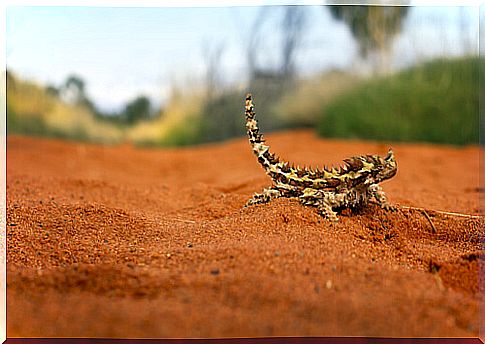
An adult male thorny devil is between 9 and 10 centimeters in length. However, the females are much longer. An adult female is 8 to 20 centimeters in length and weighs approximately 46 grams.
Thorny Devil Habitat
Imps come to life in the Great Australian Sandy Desert, located to the west of the island. This area, in the state of Western Australia, is sparsely populated by humans, and has many unique fauna in the world.
The thorny devil usually inhabits the plains, and is found near thickets of sandy soils, never rocky or hard. Spiny devils are mainly found to the west and north of the Great Desert.
These animals have diurnal habits and, although it is not a migratory animal, it is not entirely sedentary either. The thorny devil is a semi-nomadic animal that moves according to the availability of ants in the territory.
In the months of average temperature, from March to May and from August to December, the thorny devil inhabits the bushes and bushes. In these times the thorny devils take advantage of their days eating an immense quantity of ants. Every day in spring and fall, an imp follows the same route to eat ants.
On the contrary, in the hottest and coldest months, from January to February and from June to July respectively, the thorny devil prefers to stay most of the day in burrows dug by himself.
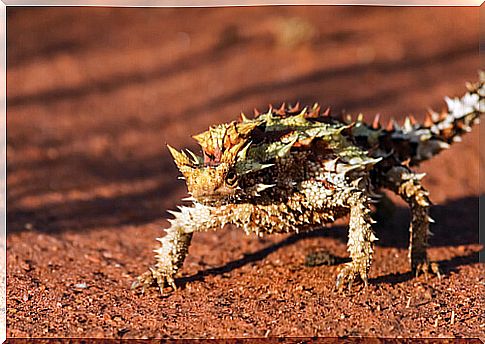
The thorny devil is an insectivorous lizard that feeds solely on ants. Their predation tactic is fairly simple and poses little risk to the imp. Once it has found a comfortable spot near its shelter, the Moloch will sit and wait for the ants to pass.
Of course, as insects are so small, the nutritional value of an ant is very low. To survive by feeding properly, a lizard must ingest more than 800 ants per day. Avoiding the hottest and coldest times of the day, the devil feeds in the mornings before 11:00 am, and between 3:00 and 6:00 pm.
Reproduction of the Australian spiny lizard
Thorny devils are animals with solitary habits. Most of the time they are spent in solitude, and they tend to group only during the mating season. In this period they go to convergence sites.
During the courtship stage, a male approaches the female and shakes his head. If the female is interested, the male will mate with her. If the female is not interested, she will walk away from the male by rolling several times on the ground and wait for another male to approach her.
The reproduction of the imp happens in the autumn time. A female lays between 3 and 10 eggs in her burrow, and after three months the young hatch.
Unfortunately, despite being difficult to eat, spiny devils are hunted by snakes and birds such as the black-breasted vulture. Although they are often disposed of without being eaten, lizards can die when attacked.
